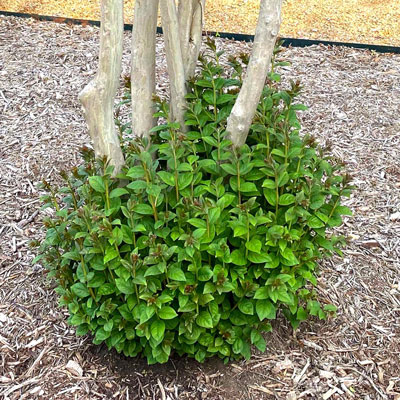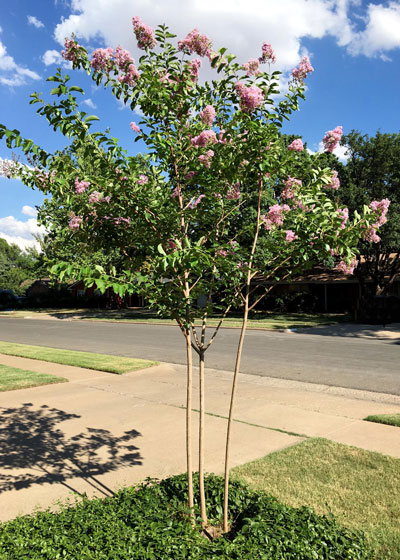Retraining a Frozen Tree-Form Crape Myrtle
In last week’s e-gardens I showed you examples of crape myrtles that were struggling to come back from the freeze.
I also showed you plants that froze completely to the ground. Dead tops with no signs of life.
If you missed that story, here is a link back to it to catch everyone up to speed. It will help you know if you’re going to need to follow the guidelines I’m about to describe.
These are the steps you should follow if you have a crape myrtle that was weakened severely by the cold or that was actually frozen completely back to the ground.

That plant will still be alive in its root system. Your task is simply to retrain the sprouts to form a new tree. And I use the word “simply” because, with crape myrtles, it really isn’t a difficult job. I’ll give you the step-by-step process so you can see for yourself.
Note: These are the same steps you would follow to retrain a tree-form crape myrtle that had formerly been mangled by topping. It’s exactly the same process, except that with topping you would do this severe pruning back in late winter. The cold did it for you this year.
To retrain a tree-form crape myrtle…
Follow these guidelines to get your tree back.

• Step 1: (May 2021) Cut all the old trunks back to ground level. Use a hand pruning saw if possible. Don’t let a chain saw’s blade make contact with soil. Soil will dull its blade immediately.
• Step 2: (May through Summer 2021) Allow all new shoots to develop around the old stumps. There may be as many as 25-30. Let them all grow.
• Step 3: (Sept. 2021) Remove unwanted shoots to reduce numbers down to the best 12 or 15, Goal is to select those that are strong and straight. At that same time, surround your new shoots with an enclosure of 24-inch wooden stakes to keep them from being broken during the winter.
• Step 4: (May 2022) Prune to remove all but 5 to 7 best stems. That will allow all water and nutrients to be focused to them. Leave stakes in place.


• Step 5: (Spring 2023 – just two years from now!) Remove final unwanted stems leaving only the permanent trunks. If stems are sturdy enough to support themselves, including their bloom clusters, remove stakes. Otherwise, use plastic plant ties to hold them in place one more year.
High-nitrogen fertilizers applied in early spring, early summer and early fall will help all this happen most rapidly, as will frequent watering.
Added note about crape myrtle bark scale and aphids.
While I have your attention, this is the time to remind you to apply a soil drench of Imidacloprid systemic insecticide around the drip line of any crape myrtle that has suffered from these two summertime pests. This application should be a one-time treatment, and it should prevent the insects, therefore their sticky honeydew residue, therefore the black sooty mold that develops in the honeydew substrate. May 15 is the prime time for making that drench application to the soil.
